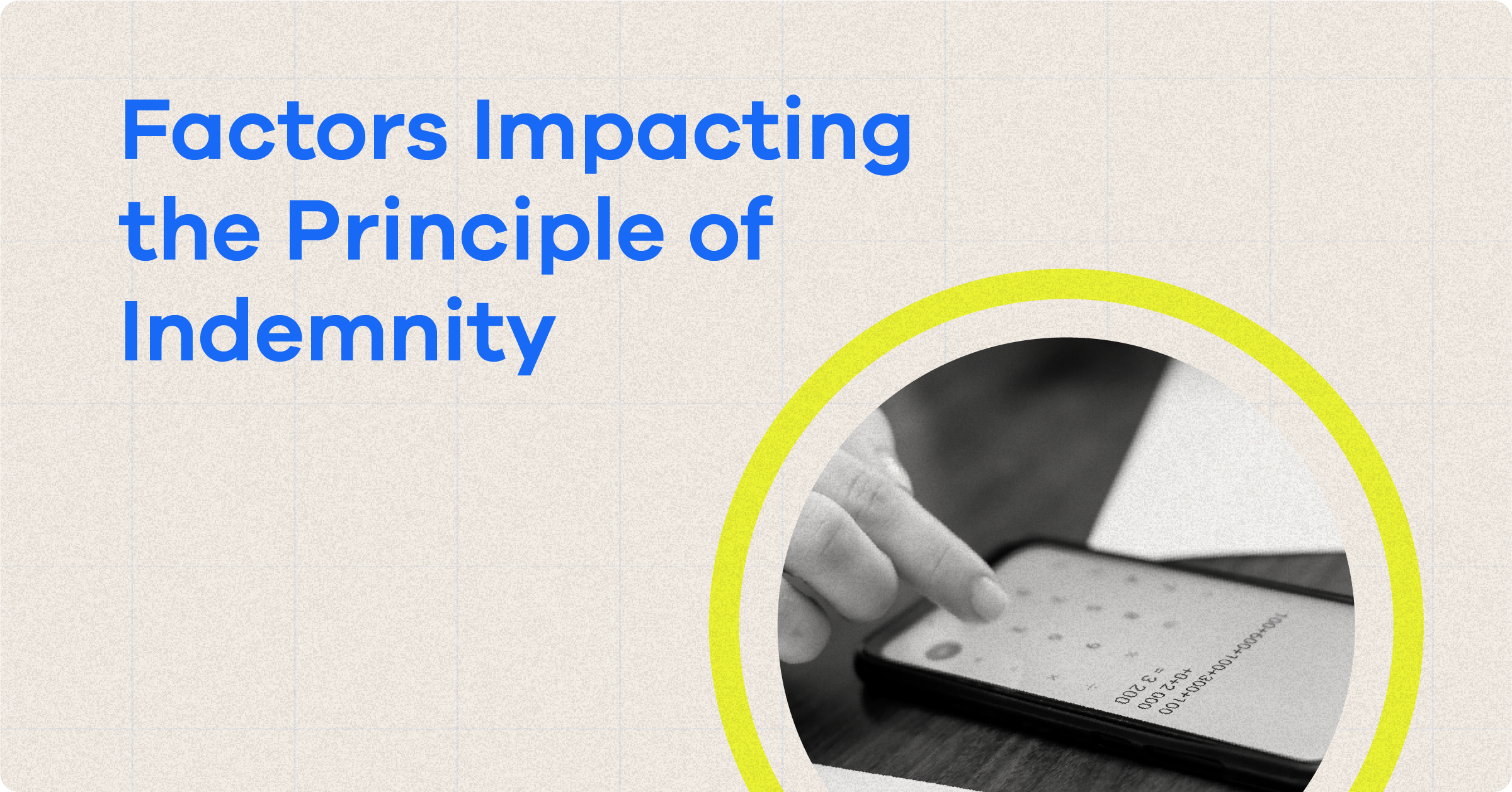Insurance policies can be a lifesaver when an unexpected event happens. However, with so many different types of insurance and confusing terminology, it can be difficult to understand exactly what you are paying for. In this blog today, we are going to discuss one key principle that determines how protection is provided to insured parties. Yes, we are going to talk at length about the Principle of Indemnity. After going through this blog, you will have a clear idea of what this principle is all about, the factors that influence it, and other related matters.
Before proceeding to the main topic, let’s turn our attention to the basics -
What is indemnity?
In a legal sense, indemnification refers to the transfer of liability for damages. A legally enforceable contract between two parties, termed an indemnity agreement, specifies the conditions related to this transfer. Here, one party promises to pay for the losses or damages of the other party. An insurance contract is a common example, in which the insurer agrees to reimburse the other (the insured) for any damages or losses, in return for premiums paid to the insurer by the insured. This means the insurer indemnifies the policyholder or insured, promising to compensate him for any insured loss or damage.
What is the Principle of Indemnity?
When it comes to insurance, the principle of indemnity says that insurance contracts provide compensation for damage, loss, or injury only to the extent of the loss incurred. Insurance contracts must ensure the insured does not make a profit in the event of a loss incurred. It applies to only the non-life category of insurance such as property, employers’ liability, public liability and casualty insurance. Life insurance is not covered by the principle since human lives cannot be measured in monetary terms. For the same reason, personal accident insurance is not covered by this principle.
Get Free Quote in Minutes
Example of Principle of Indemnity–
As a businesswoman, Priyanka owns a cosmetic shop and has insured her goods for Rs 8 lakhs. Unfortunately, a fire broke out in the cosmetics shop causing damage to part of the goods. Priyanka claimed the full amount of Rs 8 lakhs as compensation but upon investigation, it was discovered that only Rs 3 lakh worth of goods were damaged. Consequently, she will receive only Rs 3 lakh as compensation.
The principle of Indemnity does not apply to individuals and businesses which try to profiting from their losses.
Objectives of the Principle of Indemnity
- Insurance companies aim to restore your financial situation to what it was before the loss occurred.
- As soon as the insurer has fully examined and calculated the loss, the claim you receive is equal to the amount of the loss.
- The purpose of this principle is to prevent you from making a profit from your insurance claims.

What are the factors that impact the principle of indemnity?
There are a few different factors that affect the principle of indemnity in an insurance policy. The first is the type of policy that you have. There are two main types of policies: all-risk and named peril. All-risk policies will cover any type of loss or damage that is not specifically excluded from the policy. Named-peril policies, on the other hand, will only cover the specific perils that are listed in the policy. So, if you have an all-risk policy, the principle of indemnity will apply to any loss or damage that is covered by your policy. If you have a named-peril policy, the principle of indemnity will only apply to the specific perils that are listed in your policy.
3 other factors impact the principle of indemnity to a great extent.
They are-
- Excess
This means that about any loss, a certain predetermined amount shall be deducted and the balance, if any, shall be paid. This amount is called the deductible. You must pay this amount out-of-pocket before your insurance company will start paying for any losses or damages. So, if you have Rs 10,000 as deductible in your policy and you suffer a loss of Rs 2 lakh, your insurance company will only pay Rs 1, 90,000 towards that loss. You would be responsible for paying the other Rs 10,000 yourself. The higher your deductible is, the less likely it is that the principle of indemnity will apply because you would have to pay for more of the loss yourself before your insurance company would start paying for it.
2. Franchise
If a policy is issued subject to a franchise, the extent of the claim must reach the amount of the franchise when the insured receives the whole claim. The insured receives nothing if the loss amount does not reach the franchise. It is necessary in order to obtain a claim.
It will also be observed that if the extent of loss does not exceed the value of the franchise, nothing is payable and the insured does not receive an indemnity even though he has experienced a loss.
3. Average
Under-insurance can be defeated by taking the average factor into consideration. Insurance regulations require that there should be full-value insurance at all times. Under-insurance prevents insurers from receiving the actual premium even if they are obligated to pay the loss to the utmost extent possible, with the sole limit being the sum insured. To address such an issue, the average has been implemented, making the insured a co-insurer to the extent of underinsurance.
In practice, there are three forms of average. These are :
A. Pro-rata Condition of Average
According to this form of average, if the actual worth of the property is greater than the sum insured at the time of loss, the insurers will pay the proportion of the actual loss the amount insured bears to the actual value.
B. Special condition of average
This is referred to as the 75% condition of average. If the sum insured is less than 75% of the property's worth at the time of loss, the insurers will pay the proportion of the loss borne by the insured to the actual value.
If the sum insured is at least 75% of the actual value, no average applies.
C. Two condition of average
When appropriate, this is essentially a pro-rata condition of average. It is divided into two parts. The first part is the average pro-rata condition mentioned above.
The second part states that if a more specific policy covering the same loss is discovered at the time of loss, that specific policy shall pay the loss first, and if there is still a balance of claim left, then only this policy will move forward to pay the balance loss. In case of under-insurance, the average shall apply to the balance as usual.
What are the challenges in applying the principle of indemnity?
If there is more than one insurance policy covering the same loss, the principle of indemnity may not be applied correctly. In this case, each insurer would be liable for their respective share of the loss, rather than one insurer being responsible for the entire loss.
Another challenge is that insured parties need to prove their entitlement to indemnity. To receive indemnity, insured parties must first prove that they have suffered a covered loss. This can sometimes be difficult to do, especially if the loss is not immediately apparent or if it takes time for determining the full extent of the damage.
Finally, even if an insured party is able to prove that they are entitled to indemnity, they may still have difficulty in receiving their claim. This is because insurers often have strict deadlines for filing claims and providing supporting documentation. If an insured party misses these deadlines, they may be denied coverage altogether.
Conclusion -
Understanding how this principle of indemnity works can help policyholders make sure they are adequately protected when adopting an insurance policy. For more information related to indemnity or any topic in insurance, keep reading BimaKavach blogs. Here, you can also get the best recommendation for any insurance product in just 5 minutes.

